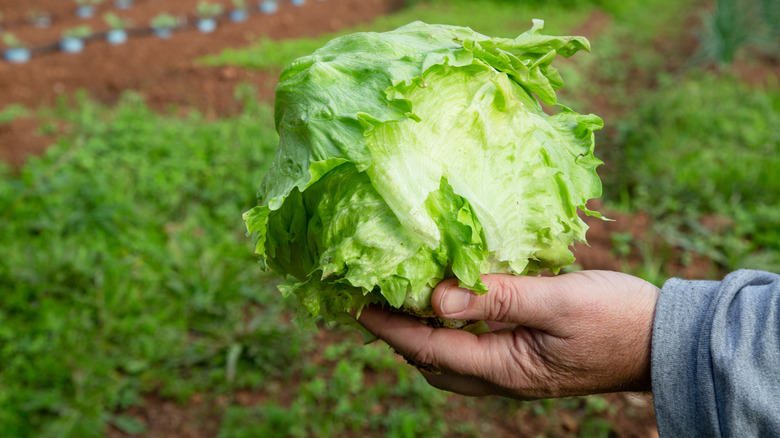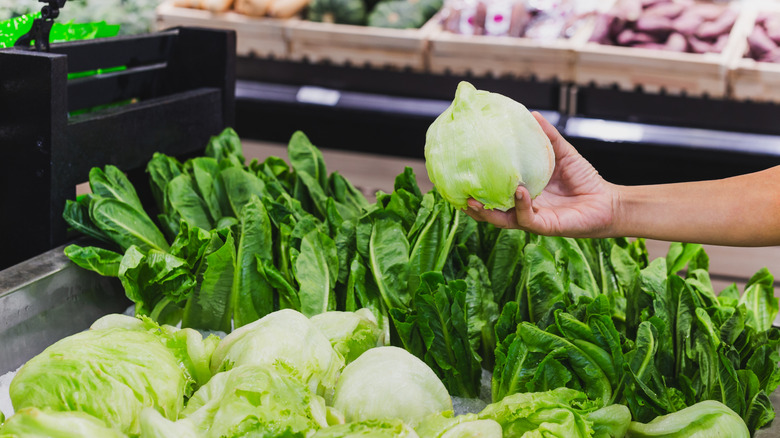The Invention Of Iceberg Lettuce Changed The Way Americans Ate
Iceberg lettuce has had more ups and downs in culinary popularity than most foods, but a surprising amount of its popularity's ebb and flow is directly related to American food production and rapid changes in technology in the early 20th century. The history of how a delicate, refrigerated vegetable became a mass-market product wasn't just an accident or Americans' taste buds changing, but rather a technological achievement made possible by the proliferation of refrigerated rail cars, grocery chains, and mass-produced refrigerators in every household. The history of iceberg lettuce and its popularity is a fascinating dive into understanding how a country went from single-family farms to gigantic Costcos in every major city.
The first step to creating this highly industrialized food system was to figure out an efficient way to move products across large stretches of the country. By the late 1800s, America's existing Eastern rail networks were finally connected to the West Coast, thanks to the Transcontinental Railroad. This new system transformed the country's food production in many ways, including expanding markets, large-scale farm productions, and new and seasonal foods being introduced to the American public. (Fun fact: Railroads also popularized the baked potato.) Enter the the Burpee Seed Company. The first research-based seed company in the United States began experimenting with high-performing lettuce varieties, and ended up debuting a revolutionary type of lettuce in 1894 deemed "Iceberg." The iceberg's dense, compact shape allowed it to travel long distances without falling apart, while its high water content kept it fresh.
The rise and fall of iceberg lettuce
The Burpee company began promoting their new iceberg variety by emphasizing its durability, mild flavor, and long shelf life (which is even better if you store your iceberg lettuce properly). By the 1920s, refrigerated railroad cars were sophisticated enough to ship lettuce from California, where it was grown year-round, to all over the country. Thanks to these magic new greens, California soon solidified its role as a leading supplier of lettuce in the U.S., particularly from the Salinas Valley, which even today is known as the "Salad Bowl of the World." In 1919, the USDA reported that Americans were consuming 4.1 pounds of lettuce per person — by the mid-1950s, annual consumption had increased to more than 14 pounds per capita. Lettuce was now the most frequently consumed vegetable in the United States.
With an increasingly industrialized food system, iceberg lettuce fit right in with its vast monoculture that required chemicals, extensive irrigation, and constant refrigeration after harvest. But America's love story with iceberg didn't last forever. By the 1980s, a growing awareness of iceberg's lower nutritional value compared to darker leafy greens, as well as consumer tastes shifting toward healthier and more diverse salad options, made iceberg a bit of a joke in the trendy food world. But what goes around, comes around. Today, iceberg is celebrated, if a bit ironically, by food writers and food snobs alike. When it comes to the iconic wedge salad or the perfect BLT sandwich, there's simply no substitute for that crunch.

